You are using an out of date browser. It may not display this or other websites correctly.
You should upgrade or use an alternative browser.
You should upgrade or use an alternative browser.
China Ballistic Missiles and Nuclear Arms Thread
- Thread starter peace_lover
- Start date
- Status
- Not open for further replies.
I think it makes sense to reuse a VLS-based missile design for bombers.It seems like a nice idea at first glance, but it really doesn't make sense to limit the diameter (and thus the overall size) of your air-launched re-entry vehicle and your overall air-launched missile to the same dimensions as your UVLS launched missile that has to confine its diameter to under 0.85m.
I think people need to recall that there are many contemporary re-entry vehicles with a biconical geometry and small fins that all look broadly similar at first inspection, perhaps some may even be within 10% of another's dimension from gross external inspection.
But that doesn't mean that they share they are modular with each other or they are part of a "family".
A small selection of various RVs and missiles with a biconical configuration with small tailfins, to demonstrate the point.
View attachment 91619
1- A larger missile is unnecessary if range and payload are deemed enough
2- A missile that is launched from an aircraft would have kinematic advantages, making it easier to achieve the needed range and/or payload.
3- If a bigger rocket motor is needed and rocket thrust and structural rigidity are enough (these are rarely a problem in most rockets) it is relatively easy to elongate a missile compared to designing a new missile.
4- Reusing the same missile saves a lot of money and time
5- A larger diameter missile may shorten the range of the carrying H-6 because of the extra aerodynamic drag caused by its larger diameter.
I believe they calculated that they could achieve the intended range and payload with a variant of the missile for VLS.
I think it makes sense to reuse a VLS-based missile design for bombers.
1- A larger missile is unnecessary if range and payload are deemed enough
2- A missile that is launched from an aircraft would have kinematic advantages, making it easier to achieve the needed range and/or payload.
3- If a bigger rocket motor is needed and rocket thrust and structural rigidity are enough (these are rarely a problem in most rockets) it is relatively easy to elongate a missile compared to designing a new missile.
4- Reusing the same missile saves a lot of money and time
5- A larger diameter missile may shorten the range of the carrying H-6 because of the extra aerodynamic drag caused by its larger diameter.
I believe they calculated that they could achieve the intended range and payload with a variant of the missile for VLS.
I have nothing against the idea of reusing a VLS based missile for air launch.
But I hope you can recognize that there are ready made counter arguments to all of your points, for example:
1 - what if the range and payload of a reused VLS missile/RV is insufficient?
2 - what if the kinematic advantages of a air launched VLS missile/RV is still insufficient?
3 - what if you want a bigger RV itself, rather than just a bigger first stage?
4 - what if the money and time is not enough to be worthy of the capability that you want?
5 - what if a reused VLS missile/RV has insufficient range to achieve requirements to offset whatever reduction in drag the missile may have compared to a larger weapon?
Now, I'm not inherently against the idea of adapting a VLS launched weapon for air launch. In fact, I'm quite a fan of the concept.
However, what I'm arguing is that I do not think the VLS launched "YJ-21" shares common parts or RV with the ventral H-6N launched AShBM/HGV, because I do not believe the dimensions and proportions of their respective RVs are identical. In fact, based on the external proportions of the H-6N launched AshBM/HGV, I believe its RV is significantly larger than that of the RV of the "YJ-21" if we keep in mind that the RV of "YJ-21" has an overall diameter that must be well below 0.85m.
If they really wanted to adopt the VLS launched "YJ-21" for air launch, I believe it would have made more sense to adopt the weapon as they were for launch under the wing hardpoints of H-6K/J/N, all six hardpoints of which are rated for KD-20 and the central four are rated for YJ-12s.
That would be a much more sensible use for the size of the weapon, and allow H-6K/J/N to carry between four to six of the air launched "YJ-21s" under its wings.
Large fin sizes don't appear to be a feature of hypersonic missiles, so I don't see a significant tradeoff to use the same glide-body warhead for a VLS and air-launched version.
So if you already have a hypersonic missile developed to fit in a VLS, you might as well reuse what you can for an airborne version.
Of course, that doesn't stop you developing a larger missile which would not fit in a VLS, but it makes sense for this to be in a higher weight/range class.
???I never said anything about fin size -- I was talking about the size of the re-entry vehicle/terminal warhead stage, and emphasizing why we shouldn't believe that the "YJ-21" RV is the same one as on the H-6N launched AShBM/HGV simply because they look superficially similar, because there are a large number of missiles and RVs with that kind of configuration.
In terms of size of the RV, think about the capability difference.
There's a difference between a re-entry vehicle whose diameter must be sufficiently small to fit inside the 0.85m diameter of the UVLS -- versus a re-entry vehicle that is literally towed ventrally under the main fuselage of a H-6N that has been specially redesigned and produced to carry a big missile.
Think about just the difference in warhead size alone.
I have nothing against commonality when it is appropriate -- and if they were to ever adopt the "YJ-21" as a weapon that H-6K/J/N can carry under its wing pylons I think that would be immensely sensible. The "YJ-21" is a weapon well sized for underwing hardpoints.
But it would be an immense waste of space to use the H-6N's ventral fuselage hardpoint for such a small RV as on YJ-21. A larger, clean sheet design or even a RV based off that of DF-26, would be much more valuable.
Last edited:
“It was supposed to be wind farms but the construction workers put the blueprint upside down. They mistaken wind tribune of digging hole underground but the holes are here anyway..."It doesn't fucking look like the base of a windmill !
This lab is under CASIC, the "send people to heaven" gang instead of CASC "send people to orbit" crew. It's top secret and had some really big shots at the ceremony.China established some top-secret lab in Beijing recently. What do ppl think it is.
My guess is it's to do with the "Five Clouds" from CASIC:
飞云
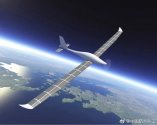
A solar powered very high altitude loitering UAV, can reach about 70km/h, endurance measured in weeks
快云
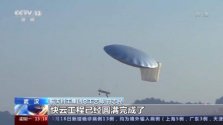
Solar powered extremely high altitude loitering UAV, the balloon looking thing is filled with regular air when deploying and the upper surface is lined with flexible solar panel. It's very slow but has endurance measured in month. Deployable by sounding rockets. It's like an upper atmosphere satellite.
行云
No idea what this is
虹云
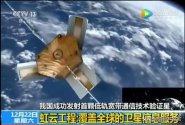
Chinese Starlink
腾云
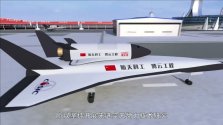
The most well known of the five clouds, a combined cycle TSTO spaceplane.
I suppose this could function as an emergency and temporary monitoring, reconnaisance and spying satellite? Plus as a cheaper solution in providing very high altitude-based guidance system for long-range missiles?飞云
View attachment 92111
A solar powered very high altitude loitering UAV, can reach about 70km/h, endurance measured in weeks
Me thinking if this related to the hypersonic bomber proposal/project from the Chinese Hypersonic Development Thread. Chinese Hypersonic Developments (HGVs/HCMs)
Last edited:
No.“It was supposed to be wind farms but the construction workers put the blueprint upside down. They mistaken wind tribune of digging hole underground but the holes are here anyway..."
Like I said in my post #7279 in this thread - Those are from some nuclear-armed wind farms.
Every single one of those wind turbines in those wind farms is very dangerous, as they are all nuclear-tipped and ready for launch at any time.
The base of the wind turbine that is anchored to the ground actually has several rocket motors that can propel the wind tubine to speeds above Mach 30.
The stem of the wind turbine carries sufficient fuel that is enough to circle the globe and hit anywhere around the world.
The individual wind blades are actually tipped with one nuclear warhead each. The stem of the wind turbine has a nuclear warhead tipped at its upper end too.
The nacelle of the wind turbine which houses the generator can automatically disintegrate during reentry, which can disperse decoys to confuse the enemy ABM systems, therefore increasing the probability of these nuclear-armed wind-turbines to penetrate enemy defensive networks.
When the red button is pushed, all of those wind turbines would lift off from the ground and head towards their respective targets as shown below:
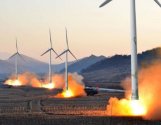
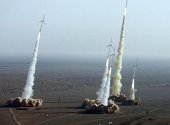
As an added bonus, using wind turbines would further increase the chances of breaking to enemy ABM systems, since the enemy would be so baffled by the presence of flying wind turbines streaking from the other side of the world at Mach 30!
Most importantly, as you all can see - China's state-of-the-art nuclear-tipped ballistic missile technology is also going green at the same time - The world's very first!
Glory to the See-See-Pee!
Last edited:
You forgot the best part - they're carbon neutralNo.
Like I said in my post #7279 in this thread - Those are from some nuclear-armed wind farms.
Every single one of those wind turbines in those wind farms is very dangerous, as they are all nuclear-tipped and ready for launch at any time.
The base of the wind turbine that is anchored to the ground actually has several rocket motors that can propel the wind tubine to speeds above Mach 30.
The stem of the wind turbine carries sufficient fuel that is enough to circle the globe and hit anywhere around the world.
The individual wind blades are actually tipped with one nuclear warhead each. The stem of the wind turbine has a nuclear warhead tipped at its upper end too.
The nacelle of the wind turbine which houses the generator can automatically disintegrate during reentry, which can disperse decoys to confuse the enemy ABM systems, therefore increasing the probability of these nuclear-armed wind-turbines to penetrate enemy defensive networks.
When the red button is pushed, all of those wind turbines would lift off from the ground and head towards their respective targets as shown below:
View attachment 92115
Glory to the See-See-Pee!
- Status
- Not open for further replies.
